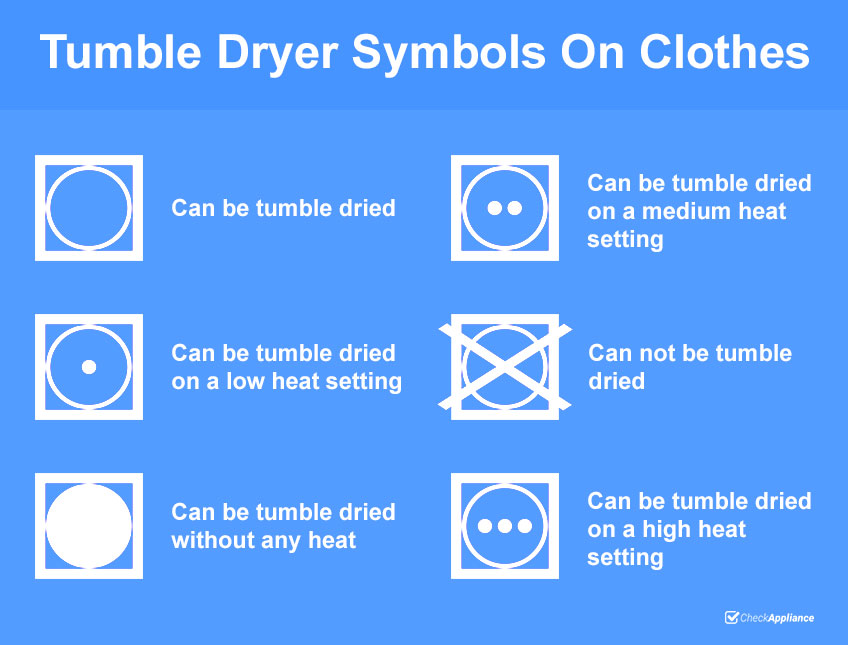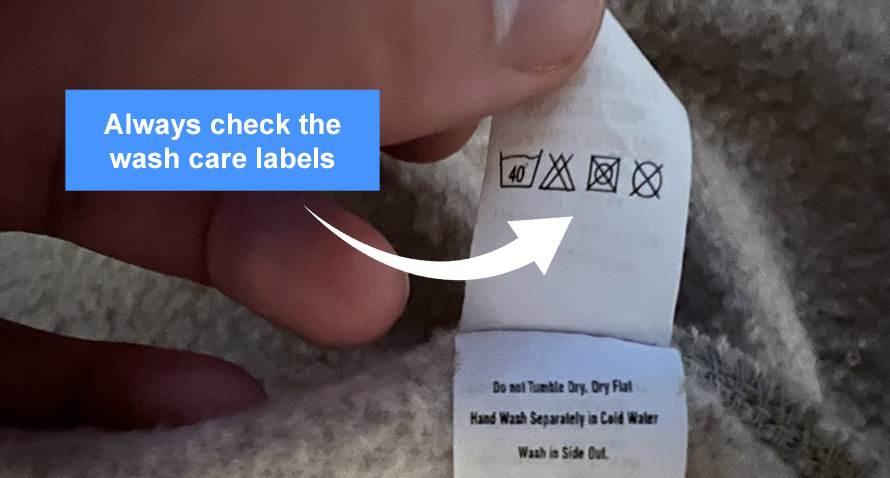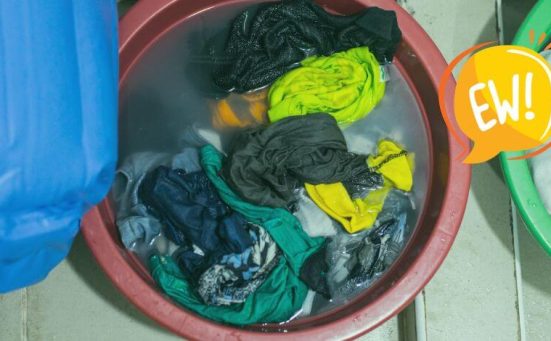
Can You Tumble Dry A Mattress Protector? (is it safe or will it damage it)
The good news is that most mattress protectors can be dried in a tumble dryer on the low heat setting.
You should always consult the care label on the mattress protector for specific washing and drying instructions.
The idea of a mattress protector is to prevent anything from getting into your mattress. Things like skin, hair, and any liquids like sweat etc.
This means that mattress protectors have to be waterproofed to some extent. This poses a problem when washing and drying because to remove germs and bacteria the mattress protector should ideally be washed on a 90 C wash program.
The problem with washing at 90 C is most mattress protectors have a polyurethane backing which would become seriously damaged at such high temperatures.
This is why most mattress protectors have care instructions that state they should be washed at no more than 40 C and tumble dried on a low heat setting.
Given the dimensions of mattress protectors, this means relatively long drying times. Some can be dried on a medium heat setting in the tumble dryer but you will need to be vigilant.
This is because of that polyurethane backing which could start to foam and blister. If you notice any blistering or foaming, the protector should no longer be used. As these small cracks will render the protector useless and will allow liquids through.
How To Tumble Dry A Mattress Protector
Check the care label for drying instructions on your mattress protector. In the absence of a care label, it’s usually OK to tumble dry a mattress protector on low heat.
After washing and rinsing your mattress protector, it should be placed in a tumble dryer on a low heat setting for 20-30 minutes. Stop after 10 minutes and check that the polyurethane backing isn’t foaming or blistering.
You might need to tumble for an additional 20-30 minutes before the protector is completely dry.
What The Tumble Dryer Symbols Mean On A Mattress Protector

Below is the full list of all of the symbols relating to tumble dryers which can be found on any washable item.
Many of these will never be found on a mattress protector and are included for information purposes only.
- Square With White Circle – This is the symbol that tells you the item can be tumble dried.
- Square With White Circle, One Black Dot In Circle – This symbol tells you that the item can be tumble dried on a low heat setting. This is the symbol most likely to be found on your mattress protector.
- Square With White Circle, Two Black Dots In Circle – This is the symbol which indicates that the item can be tumble dried on a medium heat. It is possible to find this symbol on some mattress protectors.
- Square With White Circle, Three Black Dots In Circle – This symbol indicates that the item can be tumble dried on a high heat setting. It is unlikely to find this on a mattress protector.
- Square With Black Circle – This symbol indicates that the item can be dried in a tumble dryer using no heat at all. This could be found on a mattress protector depending on the fabrics used in manufacture.
- Square With White Circle And A Black X On Top – This is the symbol that tells you that the item cannot be tumble dried at all. Some mattress protectors do carry this symbol, if your’s does you’ll need to find an alternative way to dry it.
How To Dry A Mattress Protector Without A Tumble Dryer
There are several ways to dry a mattress protector without using a tumble dryer which are;
Outdoor Line Drying
Weather permitting, outdoor line drying your mattress protector is the best way to get it dry.
Ideally the weather should be warm with a gentle breeze and the protector should be positioned on the line in such a way as to allow the drying breeze to pass through it on both sides.
If it is too sunny, take care to position the protector out of direct sunlight to prevent the polyurethane backing blistering from the heat of the sun.
Indoor Drying Using A Retractable Clothesline
If the weather is bad or you don’t have access to an outdoor washing line, a retractable clothesline is a good indoor substitute.
The retractable clothesline is mounted on a wall with the nylon line extended to an opposite wall where it is secured in place.
SEE ALSO: Our Recommended Retractable Clotheslines
You can then hang your mattress protector from the clothesline as normal.
Once the protector is dry the line can be retracted until the next time it is needed.
Retractable clotheslines can also be fitted up outdoors and are great because they are only extended when needed for drying clothes. The rest of the time, they can be retracted giving you more space in your garden.
Reduce Indoor Drying Times With A Dehumidifier
To cut down on the drying time you can place a dehumidifier in the room.
The dehumidifier removes moisture from the air which allows the mattress protector to release more moisture at a faster rate.
SEE ALSO: The Best Dehumidifiers For Drying Mattress Protectors
Dry You Mattress Protector Indoors On An Airer
If you have space for an airer (or clothes horse) simply drape the mattress protector over the airer’s frame. Be sure to keep the protector away from any heat sources like radiators etc.
Never Use A Heated Airer To Dry A Mattress Protector
If you own a heated airer, you might be tempted to use this to dry your mattress protector. It is OK to use a heated airer as long as you don’t plug it in.
The reason being, you could apply too much heat which could damage the polyurethane backing and cause foaming or blistering to the backing.
Faster Drying Times Using An Electric Fan
As you know, washing dries faster in a gentle breeze. It is possible to simulate a gentle breeze indoors using an electric fan.
It helps to open a window to allow the moisture an escape route when using a fan.
Why You Should Always Read The Wash Care Label On A Mattress Protector

In most cases it is perfectly safe to put a mattress protector in a tumble dryer. However, to be certain, you should always check the care label.
This is because mattress protectors can be made from different materials which could mean that the following could happen;
The Mattress Protector Could Shrink
Depending on the fabric used to make the waterproof backing and the padded top, too much heat could cause the mattress protector to shrink.
Or even become so misshapen that it no longer covers the mattress as it should.
Loss Of Waterproofing
If the backing becomes too hot it is likely to foam, blister and crack. Once the polyurethane backing cracks, it is no longer waterproof. This means it will allow moisture from sweat etc into the mattress.
The Protector Could Become Uncomfortable
Many mattress protectors have quilted upper surfaces which can become damaged if washed and dried using too much heat.
This leads to lumps forming on the upper surface of the protector. Which can lead to an uncomfortable night’s sleep.
Mouldy Smelling Mattress Protector
If your mattress protector isn’t dried properly and is put back on the bed damp, it is likely to start to smell musty or mouldy.
This is why you should follow all washing and drying instructions on the care label.
Frequently Asked Questions
You should always consult the care label on your mattress protector for specific instructions. But as a general rule it is OK to tumble dry a mattress protector on a low heat setting.
If you don’t have a tumble dryer you can dry your mattress protector on a washing line outdoors, or indoors on a retractable clothesline or on an airer. You can decrease the amount of time needed to dry a mattress protector indoors by using a dehumidifier to remove excess moisture.
If you are drying your mattress protector in a tumble dryer on a low heat setting, it could take anywhere between 30-60 minutes to dry completely. Line drying could take up to 24 hours to dry a mattress protector.
You should never dry a mattress protector on high heat because that would damage the waterproof backing. As the waterproof backing is usually made from polyurethane which can foam or blister if subjected to high heat.
It is recommended that you wash your mattress protector every 2 months. You might need to wash it more often if there is a spillage or you allow your pets on the bed.
Also, follow us on Pinterest ...



